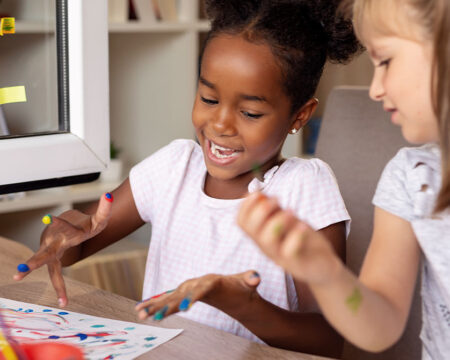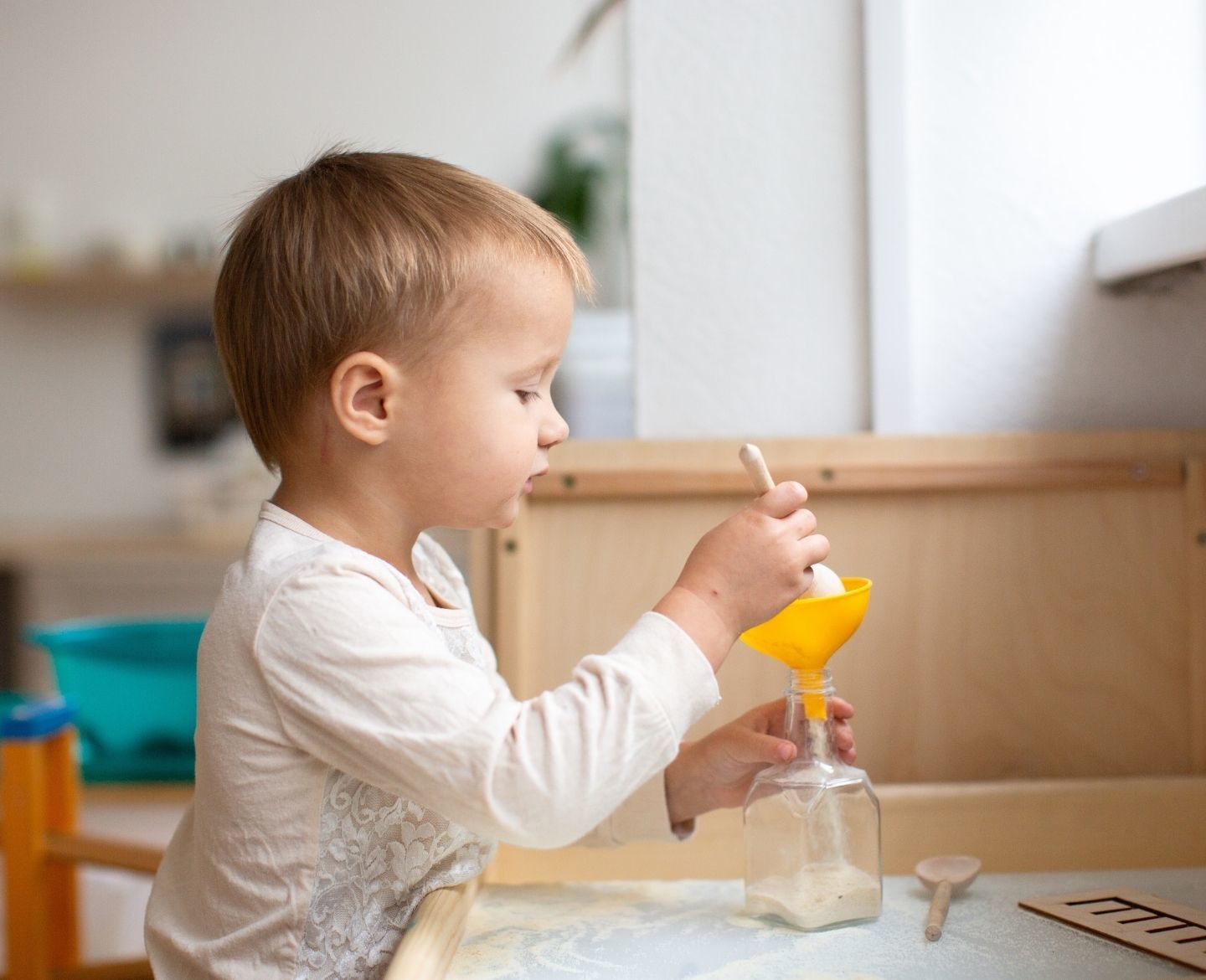How to use Montessori principles with your baby, too
4. Allow time for independence.

Many parents begin looking into Montessori when their children reach preschool age, but there is so much you can do at home even with the youngest babies. Montessori is much more than a method of education or academic system. It is a philosophy and a certain way of approaching children, whether at school or in the home.
Here are five simple (and free!) ways you can begin using Montessori with your child from birth. And if your child is older, don’t worry—all of these principles apply to older children as well.
1. Provide freedom of movement
From birth, we can give children the opportunity to move freely in their environment.
For a newborn, this simply means providing plenty of time when they are not being held or constrained in a carrier, stroller or other device.
You might spend time siting next to your child while they lay on a soft blanket, either inside or outdoors. They’re clearly not able to move around the environment on their own at this point, but can practice moving their arms and legs and supporting their head, without their movements being limited.
For an older baby, freedom of movement might include letting them pull up on objects and edge their way around the room at their own pace, rather than putting them in a jumper or holding their hands while they walk.
Freedom of movement is excellent for gross motor development, but it is also a great confidence builder. It sends a clear message to your child that you believe they are capable of developing their muscles and abilities in their own timeframe.
Another aspect of freedom of movement is comfortable clothing that supports a baby’s growing ability to move. Dressing your baby in a onesie or loose fitting pants and shirt maximizes their ability to move. Providing young babies plenty of time unswaddled and without mittens or shoes also helps them learn to use their muscles.
2. Use respectful communication
Respectful communication is a hallmark of Montessori for children at all ages, and this can certainly begin at birth. It may feel silly at first, but try telling your infant each time you’re going to pick them up. Let them know when it’s time to eat or time for a diaper. It will begin to feel more natural each time you do it.
You might try asking permission, such as, “May I pick you up for a diaper change now?”
While they, of course, won’t be able to answer you in words yet, they will understand your tone and if you ask regularly, they might start to respond in other ways, such as reaching for you or smiling.
We can also show respect through our communication by always using real, precise language. For example, rather than telling a baby a picture is a “doggie,” try telling them it’s a “dog,” or maybe even the type or name of the dog if you know.
This type of communication lays a wonderful foundation for a relationship of mutual respect, and also exposes your child to a rich vocabulary from the beginning.
3. See caregiving as bonding
Caregiving tasks, such as feeding and changing diapers, can seem endless and can be truly exhausting, especially in the first few months. In Montessori, we try to view these activities as a time for bonding and connecting, a time to give a child our undivided attention.
In a classroom with multiple babies, or a home with older siblings around, this can be an especially important time to take a few moments and be present with the baby you are caring for. It can be so tempting to scroll through social media while breastfeeding or rush through diaper changes to get to the more fun stuff, but these are truly opportunities to slow down, make eye contact with your child, and simply be with them.
Montessori also views these activities as collaborative. We always try to do things “with” children, rather than “to” them.
For the youngest infants, collaboration might just be talking them through what you’re doing, or following their lead for when they need to eat and sleep.
For older babies, you can include them more through asking them to crawl to the diaper changing area or bring you a diaper, or offering them two shirts or two foods to choose from.
Reframing these caregiving activities not only makes them more enjoyable for us parents, it ensures that we have regular check-ins where we’re fully present with our babies. It makes them feel cared for, and never like a burden.
4. Allow time for independence
How can a baby be independent? They rely on us for so much—warmth, nourishment, safety, love—but we can actually help infants develop independence from the very beginning.
We can look for times when our baby is calm and alert and let them “play,” or lay on a blanket, without being held. We can give them time to look around the room and visually explore their new world without interacting with or distracting them.
We can respond to mild fussing first by talking to them, by gently touching them or holding their hand, rather than immediately swooping them up into our arms. Sometimes all they need is a little reassurance that we’re there.
Every baby is different and every baby’s tolerance for these moments is unique. Some babies might be content to lay on their own for quite a while, while others seem to want to be held constantly. Follow your own child’s lead, but look for little opportunities to help them stretch their independence from the start.
5. Practice observation
Observation is one of the most important principles of Montessori for all ages.
Each child is on their own developmental path and the only way we can really know what they need, what challenges they’re ready for, is through careful observation.
Naturally, you spend tons of time watching your new baby. Observation is just a slightly different mindset, watching with intention, to see what new skills your baby might be working on, what parts of the room they stare at with captivated interest.
This type of observation will help you know what toys to offer your baby better than any developmental timeline. It will also help you get to know them in a deeper way.
Montessori can seem a bit mysterious or even intimidating, but so much of it is really so simple. It is much more about how we view and interact with children than about academic achievement or beautiful materials.
No matter what type of school you plan to send your children to, incorporating these principles at home from the beginning can add so much to your parenting journey.


